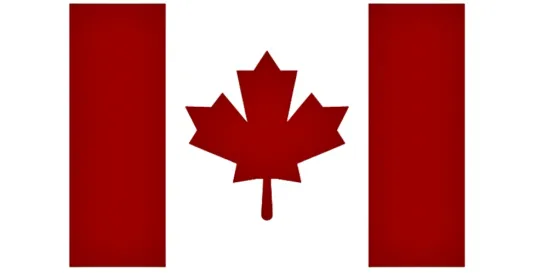On December 30, 2023, the Canadian Government published a notice in the Canada Gazette announcing its intent to establish a federal plastics registry under section 46(1) of the Canadian Environmental Protection Act (CEPA)[1]. The Section 46 notice would require producers of “plastic products” to report to the registry, either themselves or through another designated entity (e.g., a producer responsibility organization (PRO)), the quantity and types of plastic they place on the Canadian market. The producers of certain plastic products would also be required to provide a detailed breakdown of how that plastic is managed at the end of its useful life. Although this information is collected, to some extent, by Canadian provincial and territory extended producer responsibility (EPR) programs, Environment and Climate Change Canada (ECCC) believes the data currently reported lacks uniformity, which creates issues regarding data access, performance and baseline measurements, and verification[2]. The federal registry would address these deficiencies by providing a centralized tool that will enable the collection of plastics data across Canada. ECCC intends to publish the federal registry data, in part, as a way to track EPR program impacts and advance Canada’s goal of zero plastic waste.
Who Would be Required to Report?
As set out in the notice of intent, there are two groups of persons subject to reporting to the Canadian registry: (1) producers of plastic products; and (2) persons that manage plastics or plastics products after collection for diversion (e.g., through recycling, composting, energy recovery). With respect to “producers,” this term is defined broadly using a hierarchy that targets the entity that first introduces the plastic to the Canadian market. Specifically, “producers” include:
a brand owner or intellectual property holder who resides in Canada. If the brand owner is not a resident of Canada, then the first resident person to manufacture or import a plastic product in Canada is defined as the producer. If there is no resident manufacturer or importer, then the first resident person to distribute a plastic product in Canada is defined as the producer. If there is no resident importer or distributor, then the first resident person who supplied the plastic product to the consumer in Canada is defined as the producer[3].
This, of course, may have broader implications on the supply chain and, in some cases, may require upstream involvement to obtain manufacturing details of plastic products.
Persons subject to the reporting requirements may, however, designate a producer responsibility organization (PRO) engaged to fulfill EPR or stewardship obligations or another person, where no EPR or stewardship obligations exist, to report on their behalf. Indeed, ECCC’s Technical paper suggests that PROs may assist producers by reporting not only on their behalf, but also by reporting on “any or all of the required upstream or downstream data points[4].”
What Items Would be Covered?
The notice does not provide a definition of “plastic products” but rather establishes a three-part schedule that delineates the types of plastic products that must be reported to the registry[5]. Plastic products manufactured or imported into Canada must meet the specifications in each of the three parts to be subject to reporting.
The first two parts of the schedule deal with the composition of the plastic product. Canada identifies approximately two dozen resin types by their North American Product Classification System (NAPCS) code that would be subject to reporting for the registry[6], as well as five broad resin sources that apply where the source is not specified in the NAPCS code. These sources include virgin fossil- and bio-based conventional and biodegradable resins and post-consumer recycled resin.
Part 3 of the schedule identifies several plastic product categories and subcategories, harmonized from existing provincial and territory EPR programs, that would trigger reporting to the federal registry. The main categories of products, along with examples of implicated subcategories, include:
- Packaging, including primary, secondary, and tertiary packaging (e.g., reusable and single-use rigid and flexible beverage, food contact, and other containers);
- Single-use or disposable plastic products not otherwise covered;
- Electronic and Electrical Equipment (EEE) (e.g., medical devices, power tools, lighting equipment, toys);
- Tires (e.g., tires for motor vehicles, trucks and trailers, and farm vehicles);
- Transportation (e.g., automobiles, motorcycles, construction/mining vehicles);
- Construction (e.g., windows and doors, paints and coatings, piping and fittings, roofing materials);
- White Goods (e.g., devices for refrigeration/freezing, air or water purification, and washing/drying dishes or textiles);
- Agriculture and Horticulture (e.g., agricultural containers, totes and drums, irrigation equipment, propagation trays and growing pots)
- Fishing and Aquaculture (e.g., nets, trolls, trawl nets, aquaculture trays); and
- Textiles and Apparel (e.g., interior and exterior textiles, footwear, luggage)[7].
As illustrated by some of the subcategory examples identified above, the Canadian registry will not be limited to consumer products alone. Indeed, ECCC specified in the Technical paper preceding the notice that the federal registry would require producers to report on all commercial and industrial sources of plastic waste for the identified product categories[8].
How Will Reporting be Implemented?
As set out in the notice, reporting for the Canadian plastics registry would be phased in over three years based on plastic product categories. As shown in Table 1 below, while producers of all categories of plastic products will be required to provide composition and market information (e.g., resin type and source, total quantity of plastic product(s) placed on the market), only select categories of products are required to provide a detailed breakdown of where those products are directed once they reach the end of their useful life (e.g., landfill, recycling, incineration, composting).
Table 1. Summary of Substantive Reporting Obligations
| 2024 | 2025 | 2026 | |
|---|---|---|---|
| Plastic Product Composition and Market Information[9] |
Packaging Single-Use/Disposable Plastic Products EEE |
All Categories | All Categories |
| Full End-of-Life Information[10] | -- | Packaging Single-Use/Disposable Agriculture/Horticulture |
Packaging Single-Use/Disposable Agriculture/Horticulture EEE White Goods |
| End-of-Life Diversion Information[11] |
EEE White Goods |
-- |
The information reported to the registry would provide a single point of harmonized data collection across provinces and territories that will inform future compliance promotion and enforcement activities, identify gaps in the plastics value chain where further government action may be required, and support the implementation and monitoring of measures aimed at advancing Canada’s zero plastic agenda.
Comments on the notice are due by February 13, 2024. Information on how to participate is available here.
[1] Subsection 46(1) of CEPA provides the Minister of the Environment with the authority to issue a notice requiring the submission of certain information for the purpose of “conducting research, creating an inventory of data, formulating objectives and codes of practice, issuing guidelines or assessing or reporting on the state of the environment.”
[2] ECCC, Share and view ideas: Publication of a Notice of intent for the Federal Plastics Registry, https://www.canada.ca/en/environment-climate-change/services/managing-reducing-waste/consultations/technical-paper-registry.html.
[3] Notice of intent to issue a notice under section 46 of the Act with respect to reporting of certain plastic products for 2024, 2025, and 2026, Canada Gazette, Part I, 157(52)(Dec. 30, 2023), Schedule 2.
[4] ECCC, Technical paper: Federal Plastics Registry (Apr. 18, 2023) § 2.3.
[5] See Notice of intent to issue a notice under section 46 of the Act with respect to reporting of certain plastic products for 2024, 2025, and 2026, Canada Gazette, Part I, 157(52)(Dec. 30, 2023), Schedule 1.
[6] This list is derived from a Statistics Canada study of plastic material in the Canadian economy.
[7]Notice of intent to issue a notice under section 46 of the Act with respect to reporting of certain plastic products for 2024, 2025, and 2026, Canada Gazette, Part I, 157(52)(Dec. 30, 2023), Schedule 1.
[8] ECCC, Technical paper: Federal Plastics Registry (Apr. 18, 2023) § 3.2.
[9] Requires submission of: (1) the identity of all the resins used to make plastic products placed on the Canadian market; (2) the source of the resin used to make plastic products placed on the Canadian market; (3) the category and subcategory of plastic products placed on the Canadian market; (4) the total quantity in tonnes of plastic in products placed on the Canadian market; and (5) the method used to determine the quantities in (4).
[10] Requires submission of: (1) the total quantity in tonnes of plastic collected at end of life and sent for diversion; (2) the total quantity in tonnes of diverted plastics that are recycled; (3) the total quantity in tonnes of diverted plastics that are processed into chemicals, including fuels; (4) the total quantity in tonnes of diverted plastics that are sent to final disposal at a landfill; (5) the total quantity in tonnes of diverted plastics that are sent to final disposal and incinerated without energy recovery; (6) the total quantity in tonnes of diverted plastics that are sent to final disposal and composted; (7) the total quantity in tonnes of diverted plastics that are recovered for energy recovery; (8) the total quantity in tonnes of diverted plastic in products that is collected with direct reuse arranged; (9) the total quantity in tonnes of diverted plastic in products that are refurbished; (10) the total quantity in tonnes of diverted plastic in products that is remanufactured; (11) the total quantity in tonnes of diverted plastic in products that are repaired; and (p) the method used to determine the quantities.
[11] Requires submission of: (1) the total quantity in tonnes of plastic collected at end of life and sent for diversion; and (2) the method used to determine the quantities.





 />i
/>i

